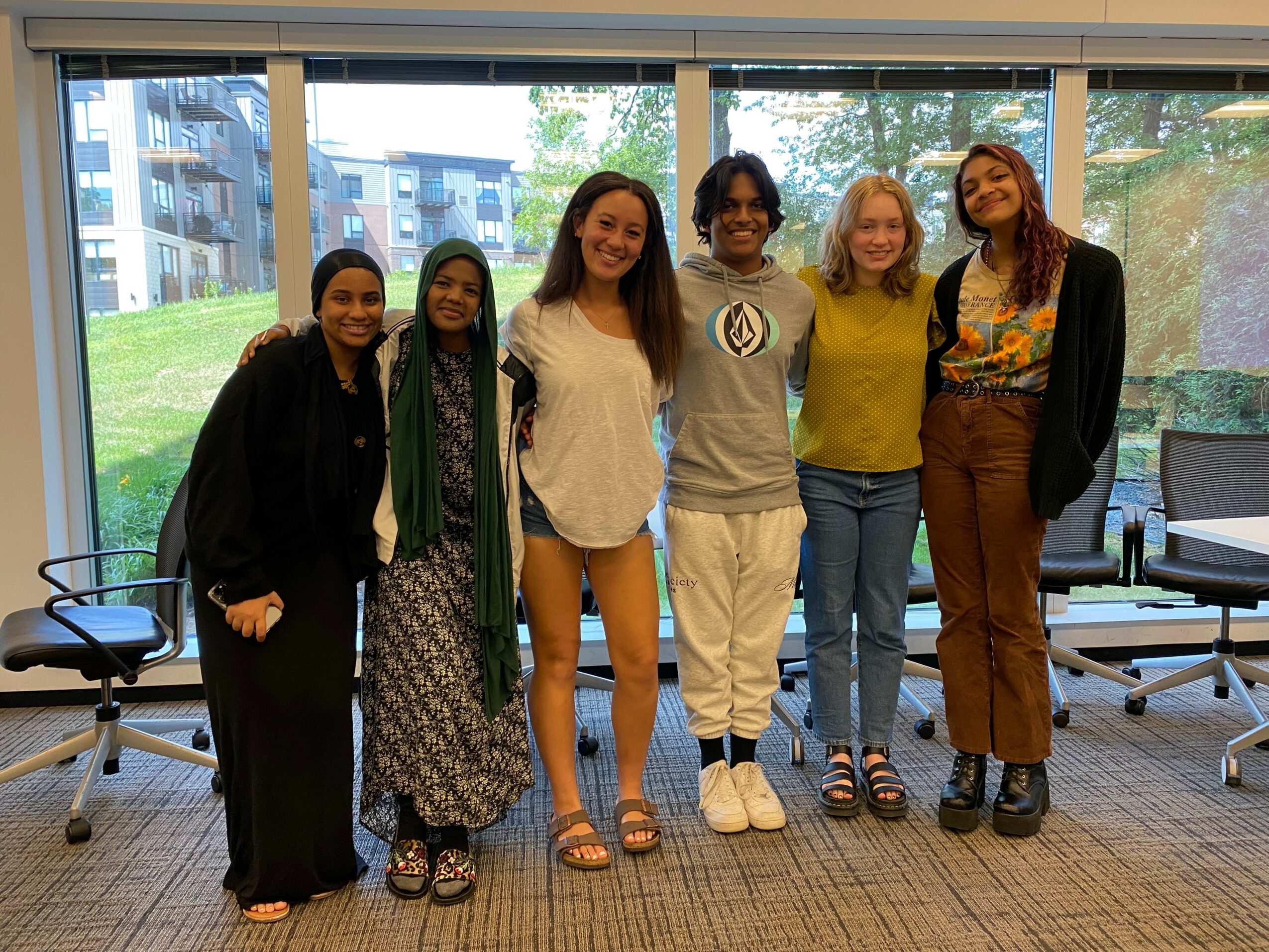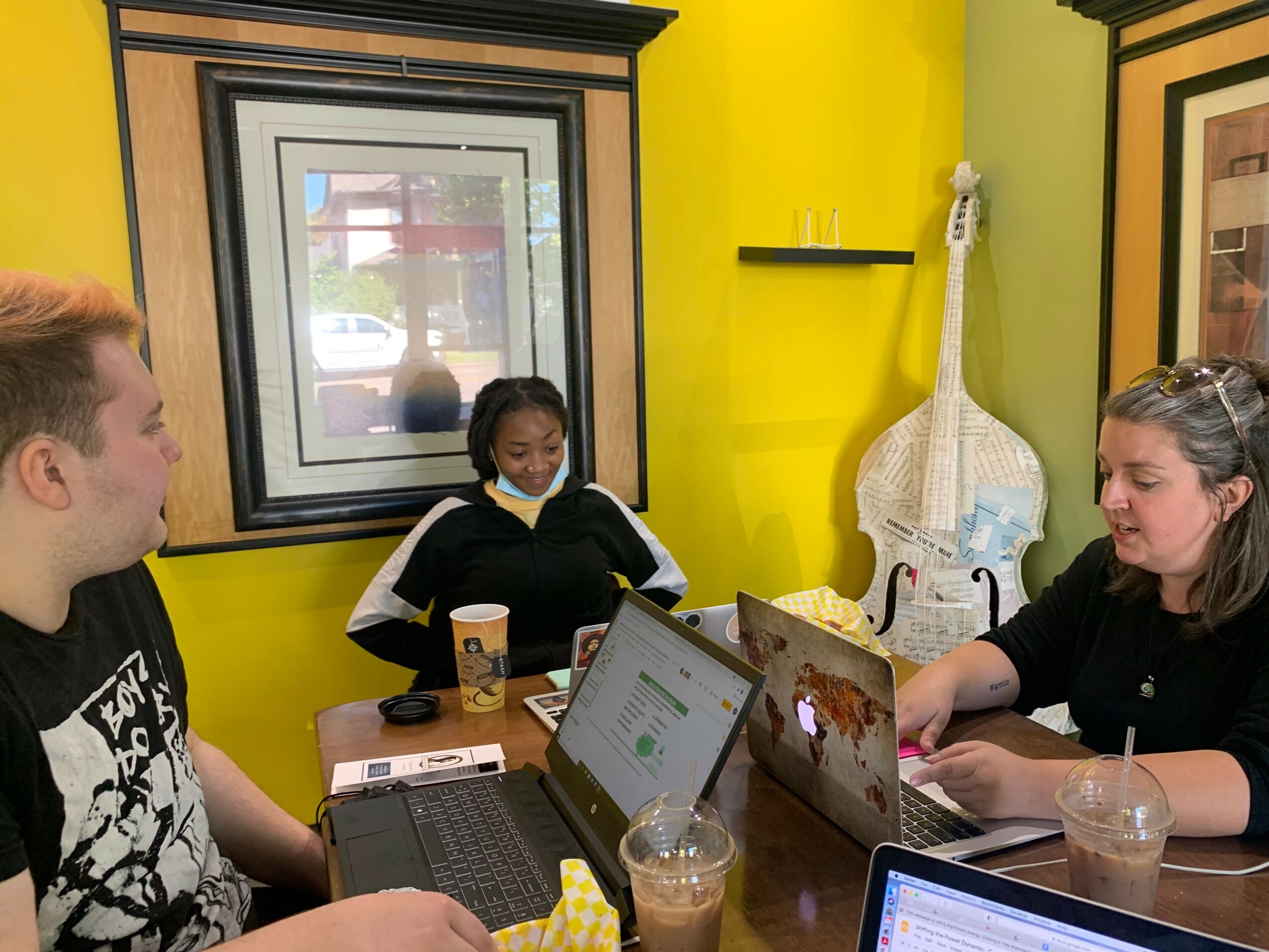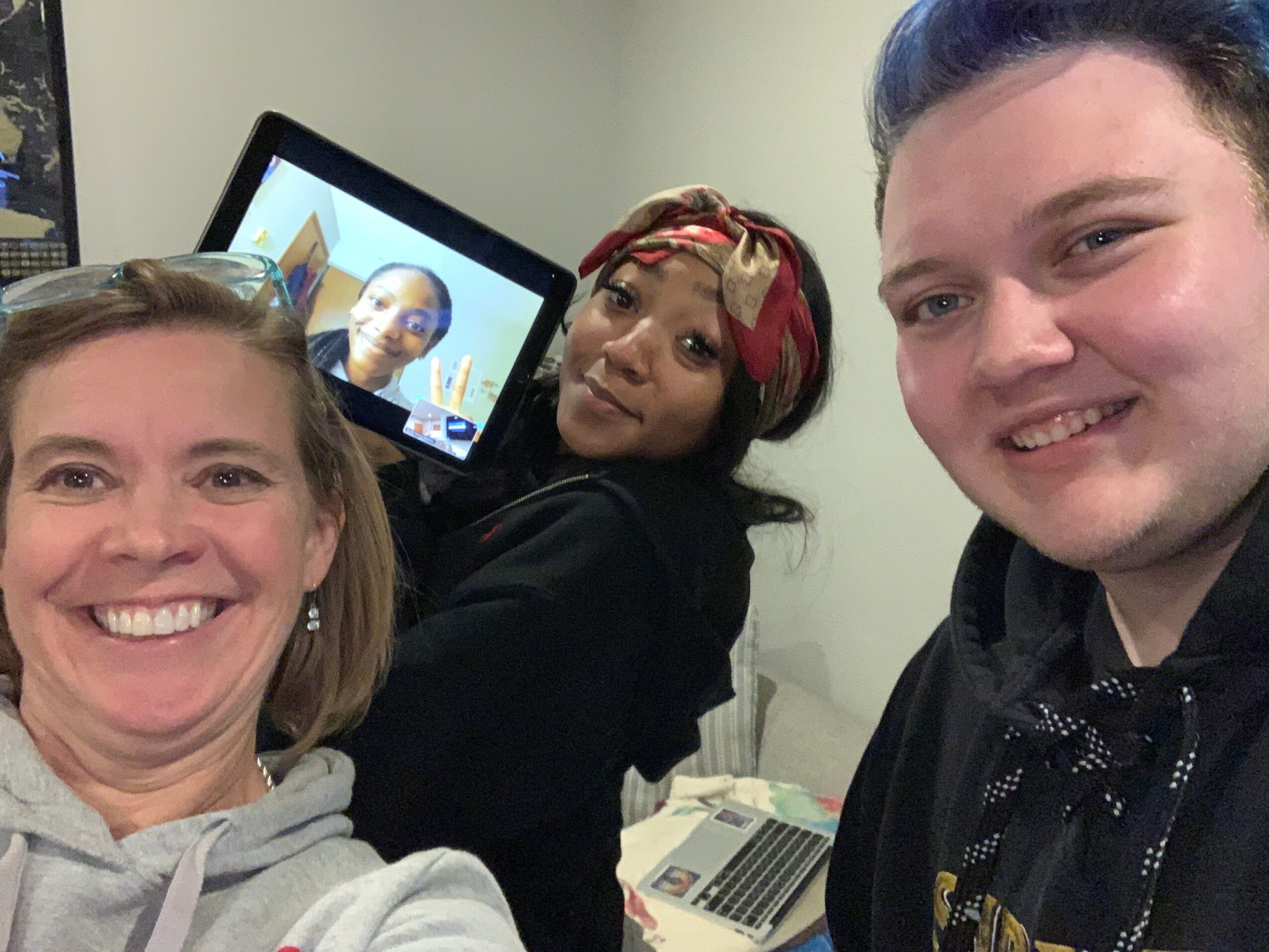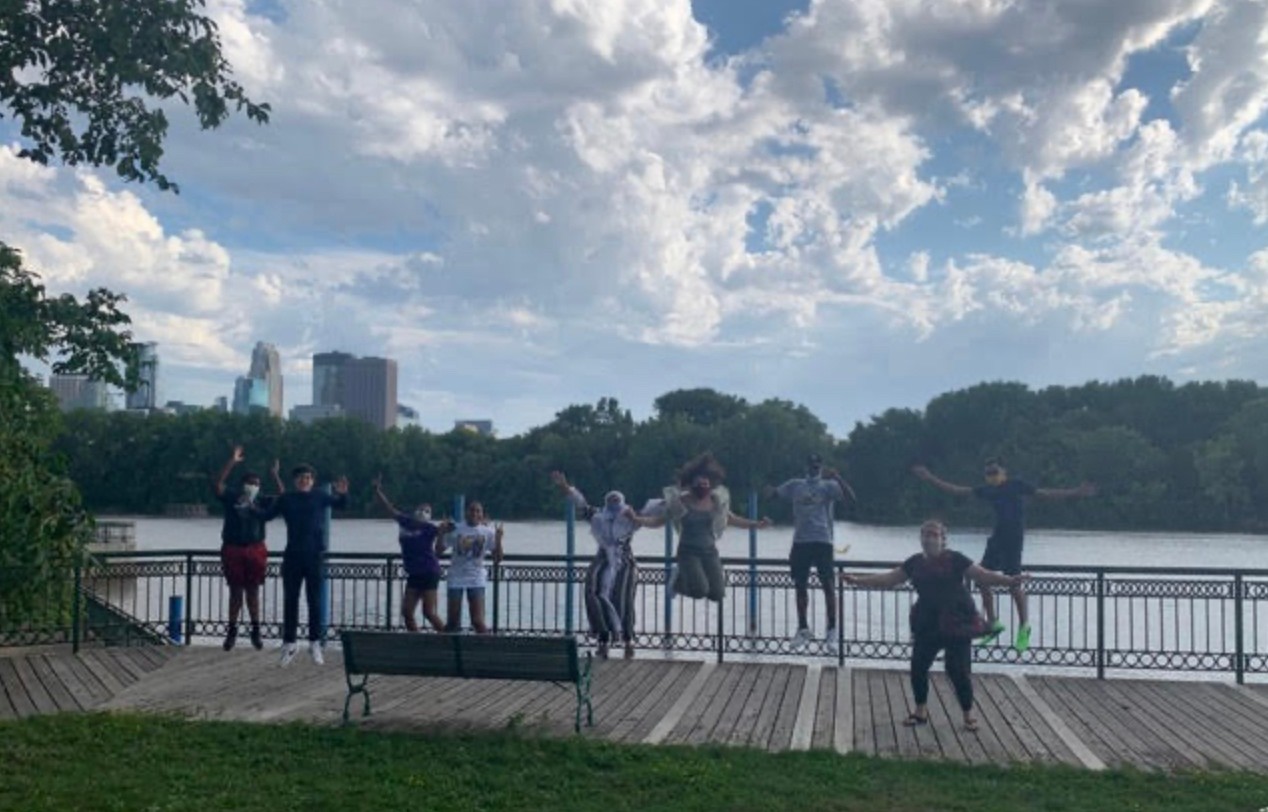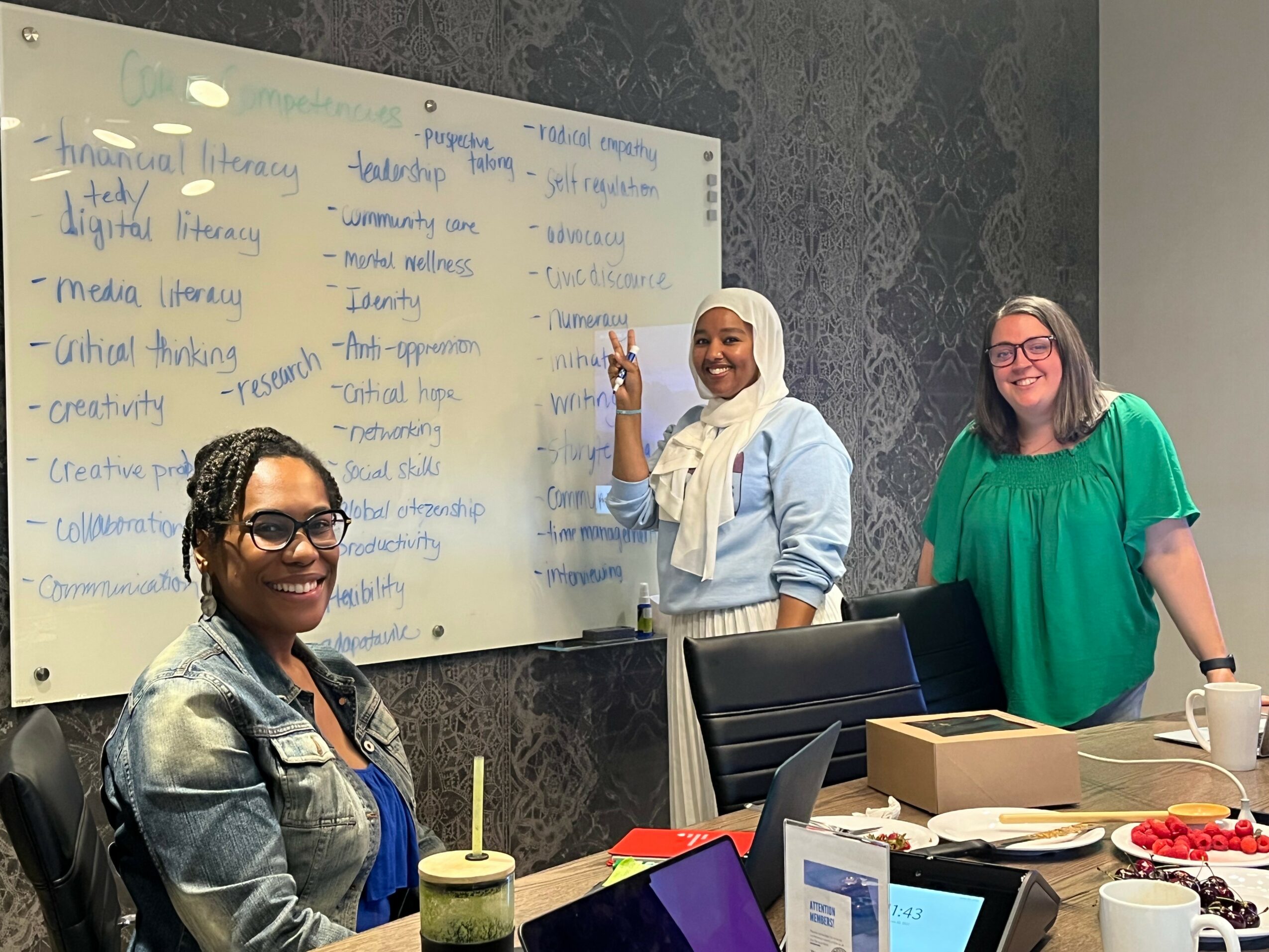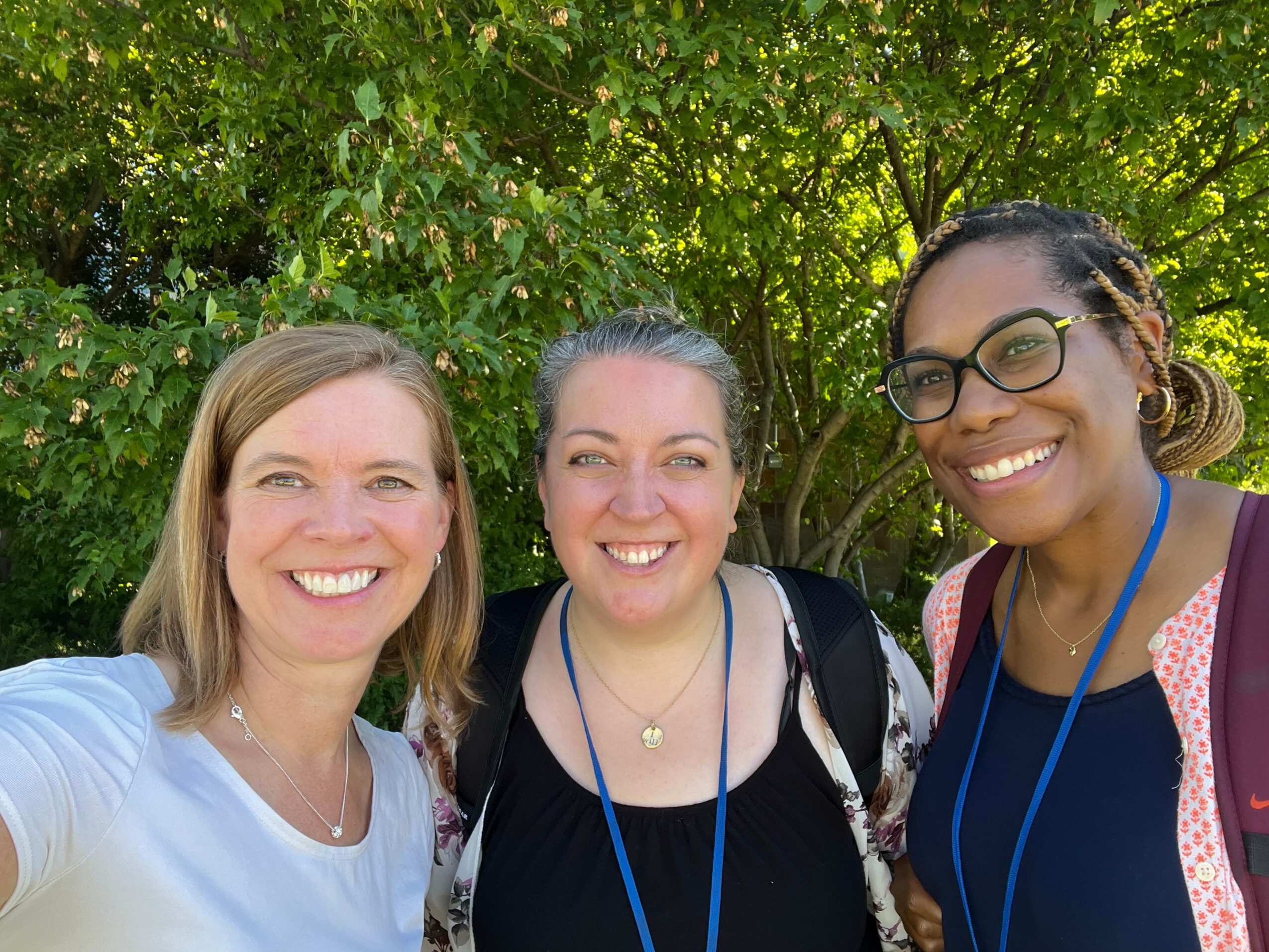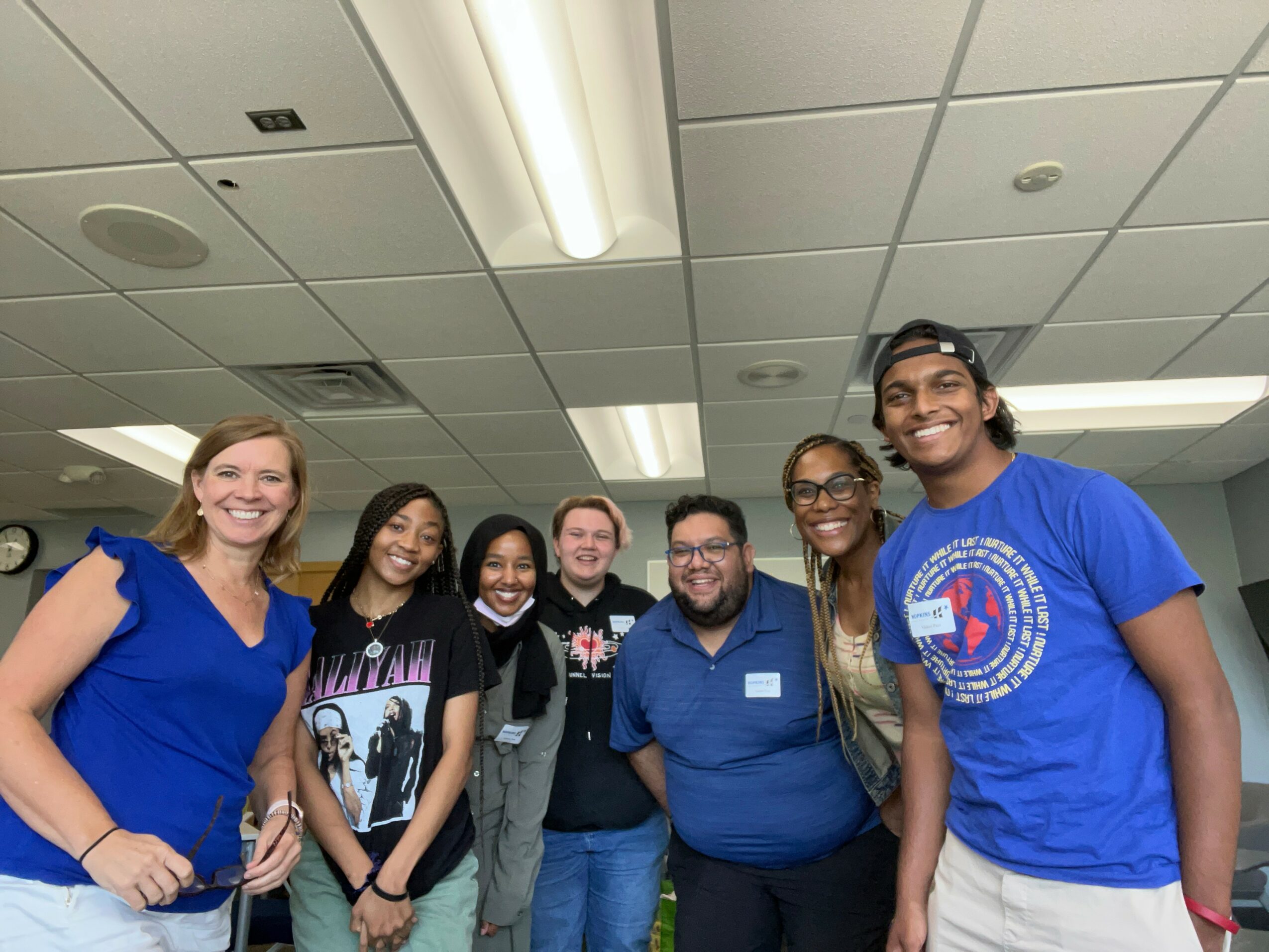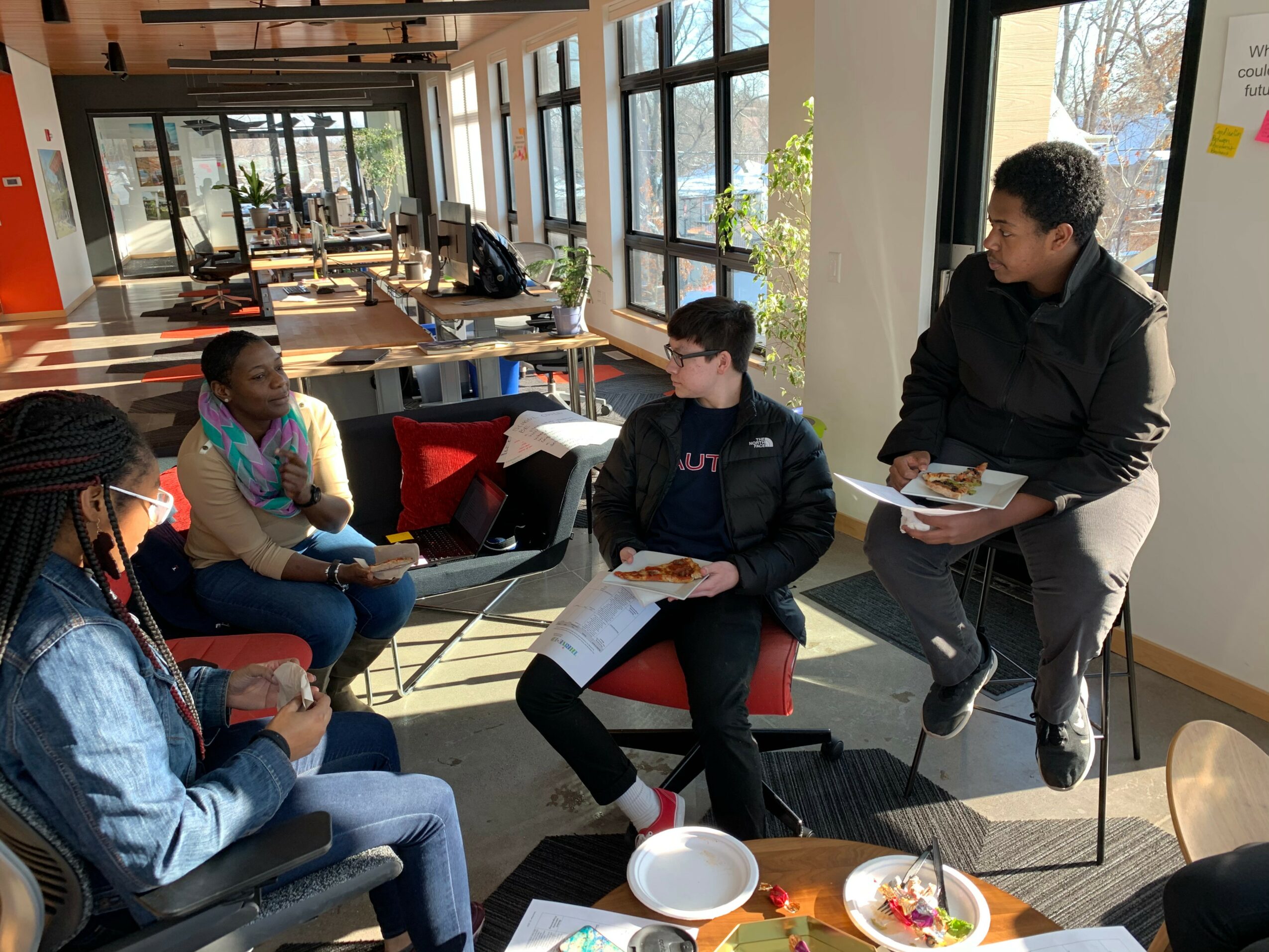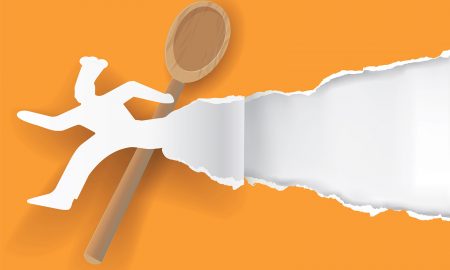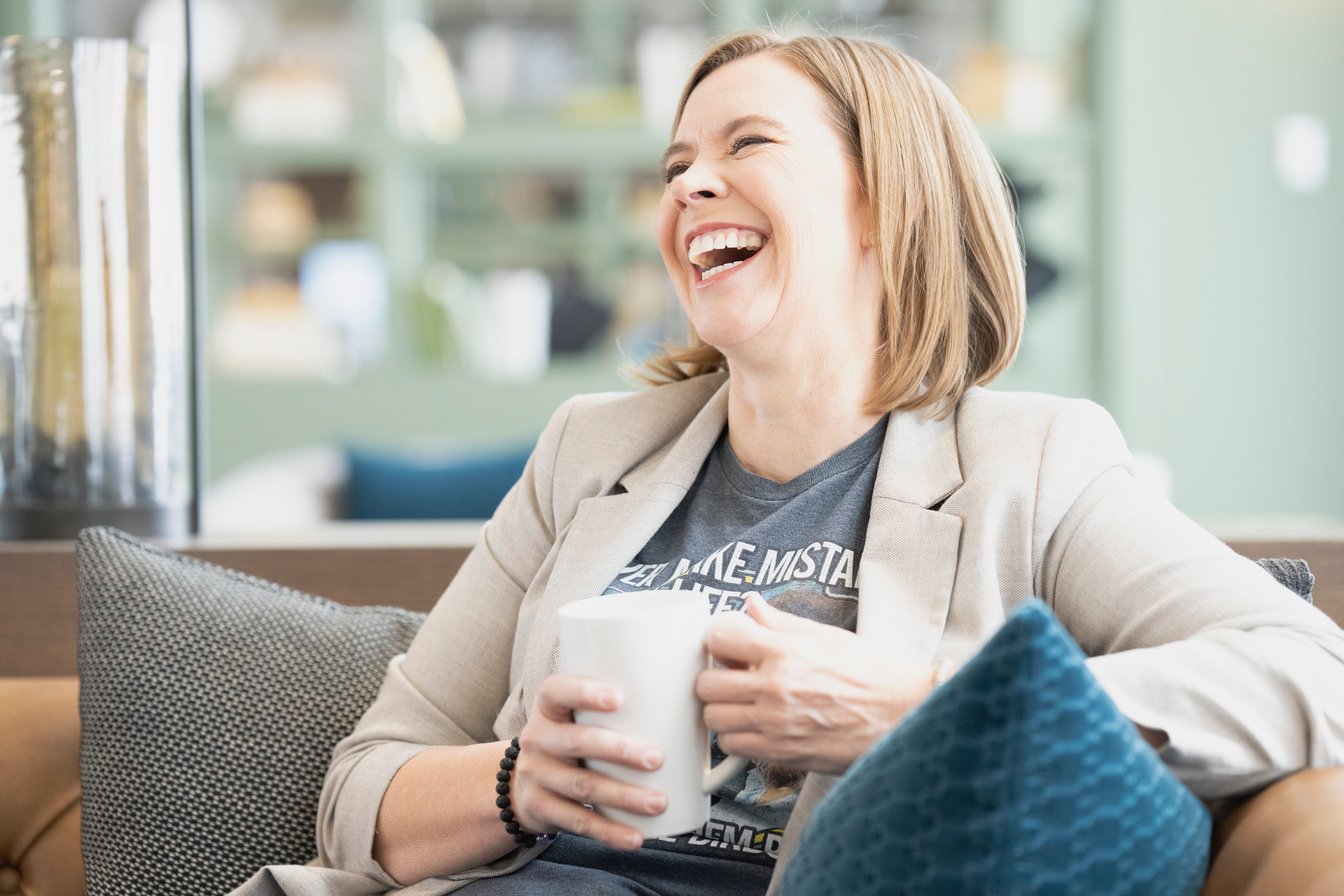

Today we’d like to introduce you to Nicole Dimich.
Hi Nicole, can you start by introducing yourself? We’d love to learn more about how you got to where you are today?
I grew up in a small town in northern Minnesota. I was terrified of going to school from the beginning. Thanks to a kind bus driver who got off the bus and took my hand to get me on the bus every morning and walk me into school in kindergarten and first grade, I got through. It was in middle school when I found a connection. A teacher saw the possibility of a leader in me. Then, I began to notice that many others were not getting those same opportunities. In fact, if you weren’t quiet and compliant, you were talked about as “those” kids. Because I was compliant and seemingly not like “other kids” adults tended to talk about students in front of me.
It was my sophomore year of college when I knew I wanted to become an educator so that I could create a classroom culture where students felt empowered. I believed all students could learn with the right conditions. I became a middle and high school English teacher in a small community and then in a larger suburban community. I sought moments to be able to create space to create with students– from service learning days to teen centers to improv groups that used theater to engage in conversation around critical issues, I have believed strongly in co-creating experiences from the time I began my career. I sought out different experiences in order to create space for these new and innovative spaces where all feel heard, valued and seen. I like to play on the edges of the system because all too often, the system would shut down innovation or ideas that didn’t keep the status quo the status quo.
When my family moved to New Jersey, I was hired as a program evaluator for the then, Princeton Center for Leadership Training. I learned how to create spaces for adults where they could build on their strengths and thrive.
Moving back to Minnesota, I worked with Minneapolis high school transformation at the time they were designing and implementing small learning communities. I was a liaison between superintendents, principals, and teacher teams. It was here where once again, I noticed how often students were seen in their deficits and not strengths.
I got a window early on into the discrepancies in opportunity. I clearly recall one particular interaction with a young man while I was visiting a high school science classroom. I noticed him in the back of the room with his head on the table. I walked up and asked, “Can I help you?” He looked up at me and just put his head back down. Persistent, I went and grabbed a piece of paper and a pencil and for 20 minutes, guided him through completing the report. His response throughout the whole thing was “I don’t care. This is stupid.” At one point, we needed to describe the difference between a physical and a chemical reaction. Neither of us knew, so we pulled in a few other kids and had a conversation. Later on, the teacher shared that was the only assignment he handed in the entire year. I realized his whole ‘I don’t care. This is stupid.’ attitude was really ‘I don’t know.’ That conversation provided him a clear next step, a safe next step that opened him up to see that he could do it.”
These are the stories that repeat themselves day after day — different students, different families, different context, but the outcome is the same — Our students and families are losing hope. Yet we also know that educators have incredible power, schools have incredible power to change a student’s life.
From this moment, I began to consult, write, and work with educators around the world. I had the beautiful opportunity to partner with folks and write books to share the stories and capture the insights to lift up educators and students in ways that make deep impact. I am an assessment architect with Solution Tree and along with my colleagues Tom Schimmer and Cassandra Erkens, have developed six tenets to deeply transform assessment practices so they center hope on efficacy and achievement. I have the amazing opportunity to learn and work with educators all over to implement these ideas in ways that make a difference and build capacity for our educators.
I am the mother of three amazing children who has taught me so much about not only life but how students experience school. They are dramatically different and are gracious in allowing me to share their stories which also gives me deep insight into how to support educators and provides insight into the struggle that so many of us have as educators and parents.
My personal experience, along with many experiences working with other schools, has influenced how I think about innovation and school change.
My dream of launching an organization that centers student voices and partners with students in really deep ways has taken shape over the past 27 years as an educator… realizing that when students are in the room and when we are deeply listening, things change in more sustainable and meaningful ways.
In 2019, I launched Thrive ed. And, I am the current and founding Executive Director of Thrive Ed. I am a mother, educator, author, innovator, and expert facilitator who has worked with elementary and secondary educators, administrators, and school districts in the United States and beyond. Through presentations, training and consultations, I help power student voices and build on educator and family strengths to create spaces where all feel possible and empowered. Thrive Ed is about partnering with those who are experiencing the inequities and the struggles schools are facing to develop new ways and pathways so students and educators experience joy, confidence in learning and future plans. We want students to have confidence that what they are learning is relevant and meaningful and not just a hoop to jump through.
This is where Thrive Ed comes into play and why it was conceived. Our mission is to fundamentally transform education by powering teachers, leadership teams, students, families, communities – individually and collectively– to innovate and thrive.
We provide space, tools, expert facilitation, coaching and feedback for educators and school leaders to think differently about teaching and learning.
We guide educators and school leaders in partnership with students through a design process to examine and reimagine their schools’ policies, practices, and curriculum. We provide unprecedented learning experiences through design spaces and ultimately, through a new school.
I want to create a school where this is the way we work, the culture we intentionally foster versus the outlier that only occurs when individual or pockets of teachers push through the system that wasn’t designed to empower all students to learn or an external person comes into the classroom with the time and energy to pause and go deeper with students to understand what they need.
Our students need new structures so they get this kind of attention that will lead to them being able to more independently persevere — when they gain confidence, they will be able to persevere without step-by-step help from an adult…. But if these are only sporadic moments, students will not trust the system or the adults in that system.
Our teachers in our current structures often do not have the space nor time to provide this type of support. I believe the educators all over are operating with the best intention and doing the best they can in their current conditions. In efforts to understand how to innovate and prepare students for a world that is ever-changing and globally connected, teachers, educators and communities struggle to understand and create something they have never experienced.
There is an urgent need to do school differently. For far too long, school work has consisted of inauthentic, irrelevant tasks that promote compliance rather than critical thinking and problem-solving.
A small group of educators is working to launch a new nonprofit to dramatically transform the current reality of factory-model education.
We aim to restore joy, creative thinking, and reflection for both learners and educators.
Our approach is two-fold: a nonprofit that powers students and educators as designers, and a school that personalizes learning and facilitates innovation for both students and teachers.
Our school will be one that cultivates joy, high expectations, and a community that sees each and every student as an individual with strengths — one that will develop a student’s agency and also help that student be an important and contributing member of a community that is working for the global good. We believe dramatically different uses of time, a firm set of competencies with learning progressions, a dedicated staff with significant time to reflect and design and co-design and solid weekly partnerships with organizations and businesses will change the world of education in MN.
We will not stop until 100% of our students are finding excellence and have a solid pathway in high school, and beyond.
I’m sure you wouldn’t say it’s been obstacle free, but so far would you say the journey have been a fairly smooth road?
The road to developing a sustainable, authentic, and strength-based organization has been a journey with obstacles and struggles along the way. Launching in 2019 as an education nonprofit, we wanted to make sure we weren’t replicating what others were already doing. We want to lift up the strengths and mobilize those of us with similar visions. After looking at the landscape in Minnesota, we knew some folks were partnering with students, and we wanted to partner with them in multiple and complex ways to be able to deeply change and transform a complex system. We hired 21 students interns and 7 adults teachers, or engagement guides that first summer to test this idea of co-creating in a way that didn’t tokenize voices, but truly listened, helped guide research to the aspects of school that wasn’t working, and tap into networks of people and resources to develop solutions. It was a beautiful beginning. And sustaining co-construction — developing an organization that wants to reinvent school by centering and developing with those most affected by the issues with schools, oru students and educators, in particular, a representative group — racially, socioeconomically, and school experience– required lots of deep listening, slowing down, creating space to hear and listen to voices and design with voices that have historically been marginalized while at the same time mobilizing the community to support and engage both with resources and time and belief. It takes deep commitment and patience and many times where I had to listen to hard feedback and take a different path because of what was happening. I am deeply grateful that my consulting work allowed me flexibility in ways to continue to build the organization as resources remain tight.
As start ups go, there are many that don’t work and so trying to create a network of folks who believed in our work to be sustainable takes time and lots of conversation and relationship building. Once I began to understand how to engage with so many different organizations, families, foundations, and people, that began the process of helping people see who we were, getting their feedback, and then developing the next iteration of Thrive Ed together with our students, staff and educators. Then, the pandemics hit. In some ways it provided a moment to reflect and while we knew things had to change before the pandemic, the pandemic really exacerbated the inequities that were present before — achievement disparities in MN are some of the largest in the nation, and teachers are leaving at record rates, and what students are learning is just not often very relevant.
We had been building trust with a local school district, Hopkins, so that one of our areas of programming would be a collaborative lab school — to truly pave the way for others to learn a whole new way of doing school. We wanted to, as a nonprofit, walk alongside a school district, Hopkins to help design this innovation. It is hard for any one organization or institution to do this alone and that has proven true. School districts have an incredible strain on their time and resources. As a nonprofit, we do, too, but it is a different type of strain and we could, as a small organization with a big dream and vision that aligned with this school district, be relentlessly patient and persistent and nimble. Financial resources were scarce for our school district so we committed to not only funding our organization but the design of this collaborative lab school pathway for Hopkins High school scholars until we could begin sharing the costs as it becomes more of an integrated part of the High school and school district. Continuing to work as partners allowed us to get the interest of foundations and Thrive Ed as an organization was testing different aspects of tech lab school through our student internships and our design2thrive studio work that was all about students and educators learning together. We have been fundraising to develop a design team that has the time and space to do the deep work needed to reinvent this new pathway and help be a model for others to do this in a school district.
Working alongside a school district is beautiful and challenging. Beautiful in that we are taking an existing structure so we don’t have the labor of trying to create an entirely new system, but we can begin to innovate on the edges. The challenge is both a challenge and a beautiful opportunity. This is an innovation we are doing together so we are constantly seeking ways to gather input from all aspects of tech school, the students, the families, the administration, and teachers to make sure that we are doing this together and are able to identify the systems that will be barriers to students getting to do this. Simple logistics like transportation and credits need to be redesigned and communicated effectively … otherwise, it will not be accessible to all students.
We are committed to being representative in terms of students and staff. This caused us to slow down our implementation because we needed more time and more unique ways to help all families learn and explore this option. We delayed a full launch of the school so we could pilot one class first. This was a beautiful moment because we now have 39 students in the class that are representative and it was the right move. That was and is true with staffing as well.
Helping people see a new way and trusting that this new way will not harm children or limit their opportunities is also something really important and sometimes a challenge as we continue to learn how to tell our story so others can engage. We definitely have gathered so many stories about the power of teachers and that teacher who made all the difference. And, we have also heard many stories of what has not worked about school and how the system really shut down opportunities and pathways for students, in particular students who have historically been marginalized.
Each obstacle and challenge — time, old systems that don’t want to do something different without a lot of persistence and designing, resources, and communication — have provided us opportunity to grow and understand how to keep our students centered, our organization focused on humanity so it is sustainable, relationships to understand the strengths and perspectives, and to partner with others doing similar work so that we can tap into all of our strengths to make bold changes in education. This is the time.
Great, so let’s talk business. Can you tell our readers more about what you do and what you think sets you apart from others?
Despite a 15-year, nationwide and local push to provide every K-12 student with equitable, high-quality education, Minnesota schools have grown more segregated and we have failed to close the opportunity gap. In fact, Minnesota has some of the worst disparities in school achievement along racial and socioeconomic lines (Grunewald, Robert, and Anusha Nath. “A Statewide Crisis: Minnesota’s Education Achievement Gaps.” Minneapolisfed.org, Federal Reserve Bank of Minneapolis, 11 Oct. 2019). Furthermore, students aren’t mastering the skills and competencies they’ll need to succeed in a rapidly changing world. Our current factory model of education isn’t working and it perpetuates systemic inequality. Finally, the pressures of “high-stakes testing, punitive accountability systems, and narrowing curriculum,” are key indicators of an alarming number of teachers who feel demoralized and disillusioned with the system, (Santoro, Doris A. Demoralized: Why Teachers Leave the Profession They Love and How They Can Stay. Harvard Education Press, 2018). Add to that the stress of a global pandemic, and about 55% of teachers recently reported considering leaving the profession – and even though BIPOC teacher representation has increased over previous years, an even higher percentage of Black and Latinx educators are now “looking to exit” (Walker, Tim. “Survey: Alarming Number of Educators May Soon Leave the Profession.” National Education Association, 1 Feb. 2022).
ThriveEd is on a mission to change the trajectory of education by empowering students to co-create curriculum and meaningful school experiences. In 2019, when the organization launched, we envisioned a restorative education community where student leaders and teacher mentors stand shoulder-to-shoulder to build personalized learning experiences rooted in dismantling systemic inequality and harm. Pushing on school systems from the inside out, the Collaborative Lab School (CLS) is a deep implementation of student-identified solutions to dismantling white supremacy and oppression in education.
In particular, K-12 students who have been marginalized and silenced in their schooling experience. Our mission was born out of the need to challenge and address:
A one-size-fits-all education system that leaves behind large swaths of students, mostly along the lines of race and to a lesser extent, socio-economic status.
A teaching profession that is hemorrhaging teachers who no longer feel hope or joy in their work.
A community that has agonized over these problems for years with little innovation or results.
A generation of students who are ill-prepared to succeed in post-secondary school and work.
To address these challenges, Thrive Ed uses the co-creation, or co-design model to elevate students to the role of collaborators and leaders – giving them a high level of agency in directing their educational path. Instead of learning how to school, Thrive Ed intentionally and deliberately creates a space for students to be facilitators and co-teachers in order to take charge of their learning. To understand how the Collaborative Lab School came to be, we go back to when ThriveEd first tested the co-creation model with an internship pilot the summer before the pandemic.
“I want to change school, so I know how to change school” – Student Intern
Twenty-one students from across the Twin Cities metro (90%+ BIPOC-identifying) were paid to conduct research in partnership with teacher mentors, to share their perspectives on what is and isn’t working in their schools – then provide recommendations for change. The interns presented their unique perspectives, experiences, and findings at a symposium. Topics included: Institutional Racism in Education; Mental Health in Schools; Socioeconomic Disparities in Education; and more. The work was deeply personal – based on students’ own lived experiences – and captured their critical feedback. Their research and presentations can be found here: https://thrive-ed.org/2019-summer-internship/.
Every Thrive Ed program developed since 2019 has been based on this initial student research and refined by student interns in the ensuing years. In the summer of 2021, we launched Design2Thrive Studios: two workshop experiences for school districts, teachers, and students, centered on empowering and amplifying student’s voice. The workshops, Pathway to Restorative Practices and The Power of Learning Co-Design as a Team, are student-led and held multiple times a year with customized support for school districts, as needed. The purpose is to abolish zero-tolerance policies, which disproportionately harm Black and Brown students, with youth-led community circles that focus on rebuilding relationships and trust while repairing harm.
In The Power of Learning Co-Design as a Team, educators and their students learn how to share power so that students are better prepared for life in this rapidly changing world. In this workshop, educators and students learn practical methods and approaches to co-designing policies, practices, and curriculum with their students. By shifting the teacher role to one of mentor, guide, coach, and partner, teachers give students more power and agency in the classroom, which in turn leads to deeper and more enriching learning experiences, reflective of the real world.
Now in stage three, Thrive Ed is poised to accelerate the impact of our student intern findings by partnering with the Hopkins School District to launch the Collaborative Lab School (CLS), based on the practices we teach through the Design2Thrive workshops. This fall, the CLS will create the space for 44 students to engage in education research and redesign. They will gain firsthand experience in reinventing the education system by co-creating a school experience that centers student, family, educator, and community voices and perspectives. They will develop critical skills and competencies that support students’ post-secondary plans while disrupting the current power hierarchies in schools that perpetuate inequitable outcomes. Students will strengthen the three core competencies highlighted in this coursework: literacy, life and leadership. This course work will be the foundation of the CLS because it sets the stage for how the community of students will collectively work to center their voices in creating a new and innovative school experience where all can thrive. Here is a closer look at the syllabus for this course: Education Research and Redesign Syllabus.
We believe that students are agents of change. We are most proud of the way we amplify student’s experiences, voice, and insights and power them to be authentic and meaningful partners in this reinvention and not tokenized. Our approach is complex in how muti-faceted our components are so that we deeply impact the system and truly reinvent and not replicate but simple in approach with our five elements that ground us in practice and how we will change the narrative and experience and outcomes for young people, families, educators, and the larger educational ecosystem in Minnesota and beyond.
Is there anything else you’d like to share with our readers?
I am a mom of three amazing children. In my assessment architect work, as an author, I have 7 books that also inform not only my consulting work but the development of Thrive Ed and my heart is my children and others like them who I deeply want to experience spaces where they learn about their strengths and find ways to take next steps and lift each other up to create a strong community that supports one another.
Contact Info:
- Website: www.thrive-ed.org
- Instagram: @thrive.ed
- Facebook: https://www.facebook.com/Thrive-Ed-108114594310170
- Twitter: @ThriveEd1
- Youtube: https://www.youtube.com/channel/UC_oLp02Oa0HMkUfkPy948Yw
